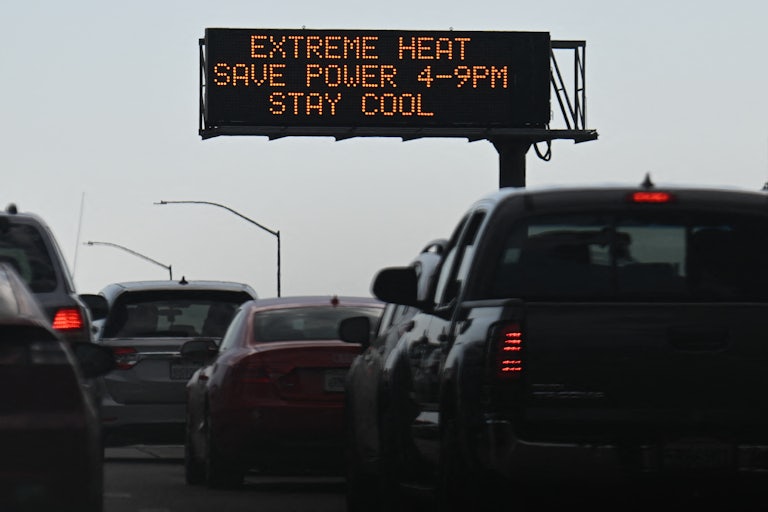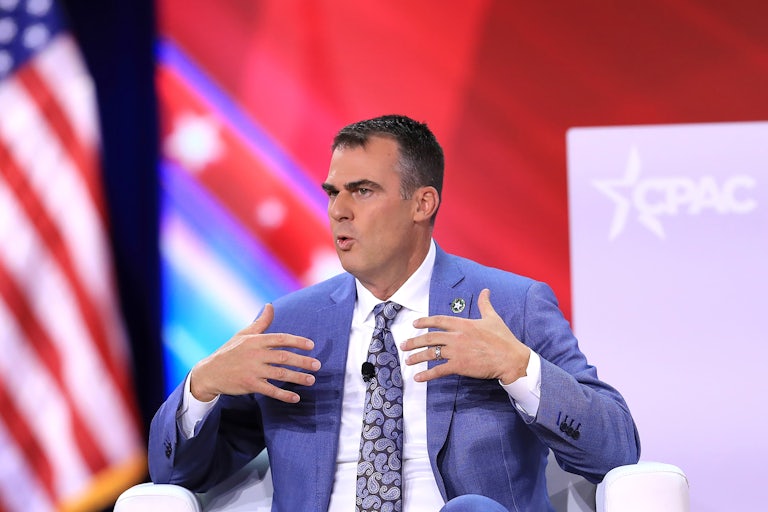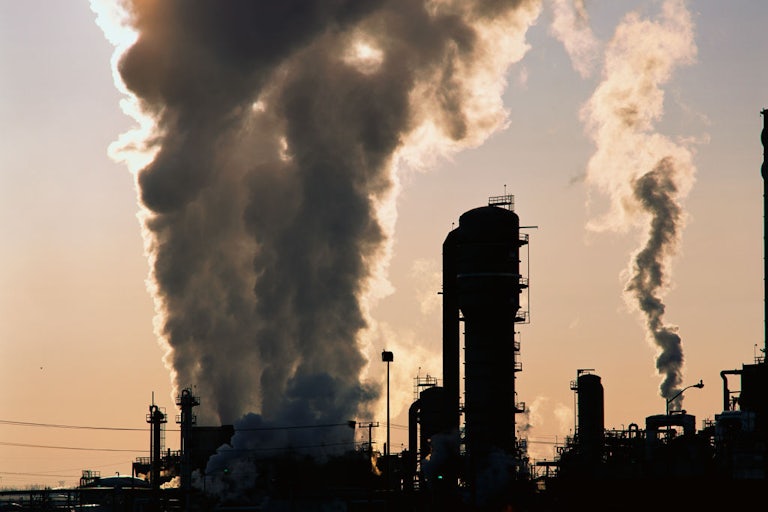Will Heat Waves Become a Voting Issue?
More people recognize that climate change is driving deadly heat waves than believe either Trump or Biden would make a good president.

In the first two weeks of July, extreme heat killed at least 37 people across the United States, and 19 in one California county alone, according to conservative estimates reported by CNN. Last week, Las Vegas set a new record of five consecutive days with temperatures over 115 degrees, while Washington, D.C., hit 104 degrees on Tuesday amid what is so far the city’s hottest summer ever.
It’s not just the U.S. In April, heat waves hammered East Asia, breaking records in Vietnam, Laos, and Myanmar. At least 1,300 are estimated to have died from extreme temperatures during this year’s Hajj in Saudi Arabia in June.
Headlines from the U.S. presidential race—a shocking debate, a possible brokered convention, an assassination attempt, and more—have overwhelmed these stories in recent weeks. But extreme heat may prove in retrospect to be one of the most important stories of the summer.
And three-quarters of Americans accept the science behind this fatal heat. Seventy-four percent of people in the U.S. now believe that global warming is affecting extreme heat in the nation, according to a large survey released this week by the Yale Program on Climate Change Communication and George Mason University’s Center for Climate Change Communication.
Let’s put that number into perspective: 74 percent is not only higher than the percentage of respondents in a March 2024 Gallup poll who think Trump would make a good president (35 percent), and higher than the percentage who say Biden would make a good president (30 percent)—it’s higher than both of those numbers added together. More people in the U.S. believe climate change is driving extreme heat than think either party’s candidate would do a decent job in the White House.
Personal beliefs are complicated, and so are poll numbers. That 74 percent figure doesn’t mean that 74 percent of Americans are motivated to act right now (or in November) to limit climate change. The same Yale/George Mason survey found, bizarrely, that only 50 percent of Americans think they have “personally experienced the effects of global warming,” and only 47 percent think people in the country are being harmed “right now” by global warming.
But the survey also found that 67 percent of Americans say global warming is “personally” important to them, to varying degrees, and 62 percent feel some level of personal responsibility to help reduce it.
Liza Featherstone previously wrote at TNR about a group called the Environmental Voter Project, whose leaders believe that climate change—and the environment more broadly—may be a vast, currently untapped force in this country’s elections. While many voters don’t consider climate change their top priority, many people who currently don’t vote (and therefore aren’t necessarily captured in historical election data, “likely voter” polls, or even Democratic or Republican voter-turnout efforts) say climate change is their top political priority.
Some experts, accordingly, are starting to believe disaffection and climate concern may go hand in hand, in ways that could lead to huge swings if people who care about climate change suddenly show up at the polls. That’s an intriguing theory this summer, as so many people and op-eds are expressing dissatisfaction, or even panic, at the candidates taking the stage at the Republican and Democratic conventions.
As deadly heat waves continue, and increase, it will become harder and harder for people to believe that they personally haven’t experienced the effects of climate change. And as Americans’ disenchantment with their political options grows, party leaders may well wonder whether the answer to their electoral woes—putting climate change front and center in their campaigns and policy platforms—has been staring them in the face all along.
Good News/Bad News
![]()
A project in Borneo, The New York Times reports, is providing proof of concept that community-run reforestation can boost biodiversity and wildlife while helping villages get the services they need.
![]()
Google’s recent retreat from net-zero goals, thanks to the energy demands from artificial intelligence, isn’t the only sign of Big Tech struggling to keep its carbon neutrality promises. As MIT Technology Review explains this week, Amazon’s claims of meeting its targets also deserve scrutiny: The company is relying heavily on renewable energy credits and carbon credits, and it’s far from clear that those actually reduce emissions.
Stat of the Week
1.3 milliseconds per century
That’s the increased rate at which the planet’s rotation is slowing (it was previously slowing by only 0.3 to 1 milliseconds per century), due to the melting of the polar ice caps, The Guardian reports.
What I’m Reading
Scientists plan climate engineering experiment in ocean off Cape Cod
Many worry that geoengineering—tinkering with the world’s natural systems, like the circulation of water in the air and ground, in an attempt to reduce climate change—is both risky and represents time and money better spent just halting fossil fuel emissions. But scientists at the Woods Hole Oceanographic Institution in Massachusetts are about to experiment with it:
The scientists want to disperse 6,600 gallons of sodium hydroxide—a strong base—into the ocean about 10 miles south of Martha’s Vineyard. The process, called ocean alkalinity enhancement or OAE, should temporarily increase that patch of water’s ability to absorb carbon dioxide from the air. This first phase of the project, targeted for early fall, will test chemical changes to the seawater, diffusion of the chemical and effects on the ecosystem.
If successful, the team plans to conduct a larger trial next year in the Gulf of Maine.
Dan McCorkle, co-principal investigator of the project and a recently retired Woods Hole researcher, said the team chose a part of [the] ocean that would minimize impact on marine life, and that they will stop the release of sodium hydroxide if marine mammals are present. The chemical will likely be detectable in an area a couple miles in diameter and should dissipate within five days.
Read Barbara Moran’s report at WBUR.
This article first appeared in Life in a Warming World, a weekly TNR newsletter authored by deputy editor Heather Souvaine Horn. Sign up here.









